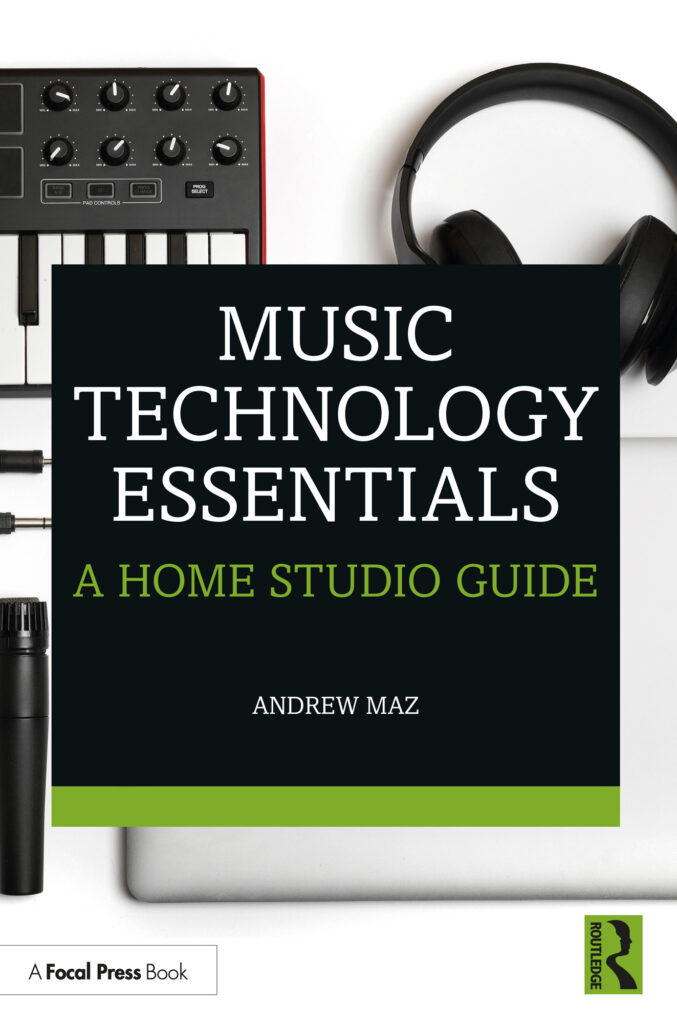
I am pleased to announce that my new book, Music Technology Essentials, is now available for purchase.
This book is a culmination of over ten years of teaching an introductory music technology course at the college level. I was frustrated with the choices of textbooks for my course. The texts were either too advanced for new students or glossed over details I felt were important. A few years ago, I decided to abandon textbooks and create my own content for the course. Over time, I edited the content until I found a balance between detail and practicality.
I was surprised by the amount of misinformation students possessed. The information they gathered from the web and magazines was missing a foundation. They know how to use their software, but they did not understand how or why things worked. If they wanted a louder snare drum on a track, they would add compression because based on the information they had, if you want something louder, use a compressor. If they want to increase the low end in a mix, they will use a shelving filter on the entire mix. The web is filled with “tips and tricks” to make your mixes better. Every month there is a new plugin that promises to enhance your work and give you “professional” results.
As educators, we often joke about imparting students with “just enough information to be dangerous.” We want students to have knowledge, but not more than they need. If they are too curious, they might push the wrong button and ruin a recording session or damage the equipment. The students in my classroom all possessed just enough information to not only be dangerous, but also the inability to make informed decisions about the hardware, software, and plugins they bought.
The goal of this book is to provide new users with an essential understanding of audio, MIDI, and synthesis. It is a starting point, one which hopefully will inspire questions and curiosity. This book is not meant to be a solution, but rather a starting point.